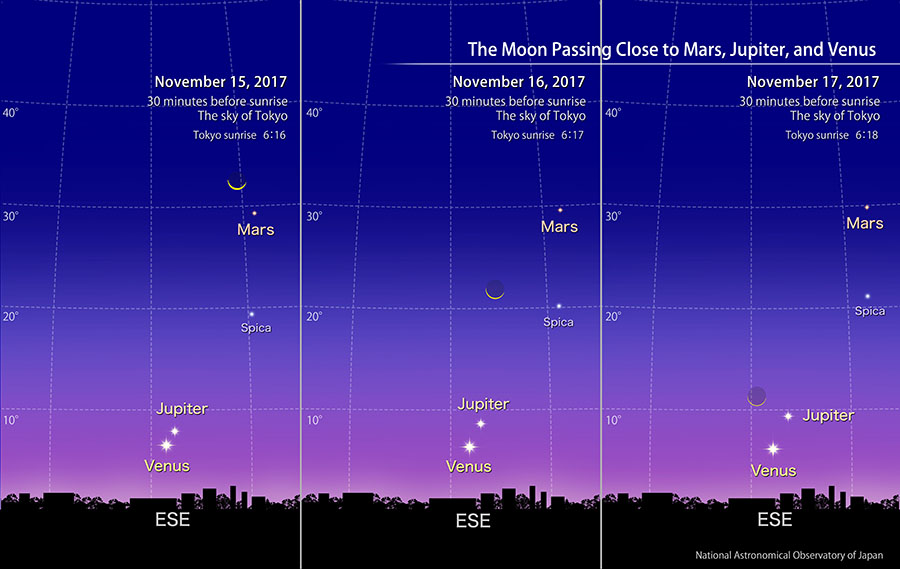The Moon Passing Close to Mars, Jupiter, and Venus (November, 2017)

Look for the Very Thin Moon Using Planets as a Guide
In mid-November, Mars is visible in the eastern sky before dawn. Also, around the time of sunrise, Jupiter and Venus appear from the horizon illuminated by the morning dawn. From November 15 to 17, a very thin Moon, just before the new phase, approaches these planets.
First, on the 15th, the thin 26-day-old Moon approaches Mars. The brightness of Mars around this time is only about 1.8 magnitude. Even though Mars shines low in the sky, let's enjoy Mars shining to the lower right of the Moon, at an early time before the sky becomes bright.
Then 2 days later on the 17th, having waned even more the Moon approaches Jupiter and Venus. It is difficult to find this extremely thin Moon. So, let's look for Venus which shines brightly even when the sky has become bright. Even though it shines low in the sky, Venus stands out clearly in the sky with a magnitude of almost -4. First, look for Venus. After you find it, look for Jupiter on the upper right of Venus. And then, look for the Moon on the upper left of Jupiter. Since those shine within a small range, you can use binoculars to search for them. However, it is very dangerous if the rising sun is in the field of view. So, let 's check the sunrise time beforehand and finish observation before sunrise.
Let's observe the Moon just before new phase using Venus as a guide! This might be a challenge because the thin waning moon is difficult to find.
Reference: Ephemeris Computation Office
With the “Sky Viewer” you can easily explore the appearance of a typical urban night sky (planets and constellations are visible). The Celestial Phenomena section of the glossary explains the planetary phenomena terms: greatest elongation, opposition, conjunction, stationary, etc.